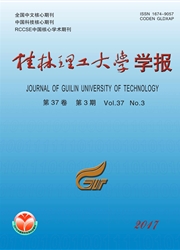

 中文摘要:
中文摘要:
为从分子尺度优化C-S-H微结构提供理论依据,采用模拟大体积混凝土内部变温历程的养护制度,运用29 Si魔角旋转核磁共振(29SiMAS NMR)结合去卷积技术,研究了变温条件下Ba(OH)2掺量为1.0%时对水泥浆体C-S-H微结构的影响规律。结果表明:在变温条件下掺加Ba(OH)2提高了水泥浆体中硅酸盐矿物水化程度,尤其在水化早期(3d)时硅酸盐矿物水化程度增幅较大,进而使C-S-H结构中硅氧四面体二聚体数量增加,导致其C-S-H平均分子链长(MCL)显著低于纯水泥浆体,避免了纯水泥浆体在降温阶段出现C-S-H的MCL降低的现象。同时,掺加Ba(OH)2进一步降低了水泥浆体在变温过程下C-S-H中Al3+取代Si4+的程度。
 英文摘要:
英文摘要:
In order to provide the theoretical basis for optimizing the microstructure of C -S -H at molecular scale,by simulating the variable temperature process in the interior of mass concrete and using the 29 Si Magic Angle Spinning Nuclear Magnetic Resonance (MAS NMR)combined with deconvolution technique,effect of 1.0% Ba(OH)2 on C-S-H microstructure in Portland cement pastes at variable temperature regime was in-vestigated.The results show that the hydration of silicate minerals in cement pastes is improved by mixing the Ba(OH)2 at variable temperature regime,especially at the early stage hydration(3 d).The amount of silicate tetrahedra dimers is increased,leading to the mean chain length (MCL)of C -S -H in cement pastes with Ba(OH)2 lower than that in pure cement pastes,avoiding the phenomenon of C-S-H MCL reduction in pure cement pastes at the cooling stage.Meanwhile,the degree of Al3+substituting for Si4+is further decreased by adding to Ba(OH)2 in cement pastes at variable temperature regime.
 同期刊论文项目
同期刊论文项目
 同项目期刊论文
同项目期刊论文
 期刊信息
期刊信息
